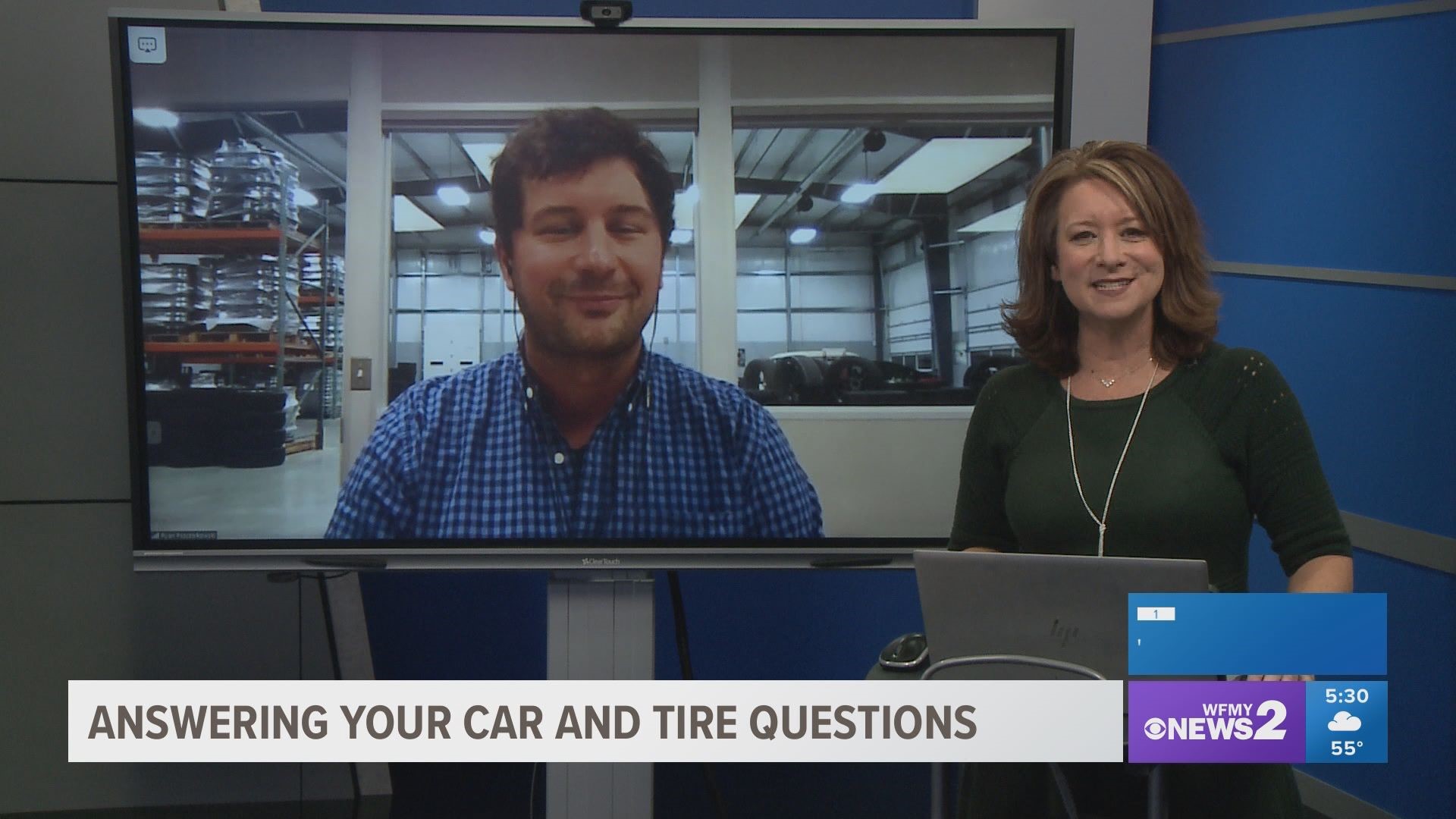NORTH CAROLINA, USA — You need to make sure your car is ready for any season especially winter. Ryan Pszczolkowski from Consumer Reports joined us to answer your questions and share these tips.
Why do tires go flat in cold weather?
The main reason for this is the dropping temperatures, which cause the air to become denser and consequently lower the tire pressure. Couple that with tires naturally losing pressure over time, and fall and winter can be a busy time for pressure checks and adding a little air.
Getting a tire pressure warning light on a chilly morning doesn’t necessarily indicate a puncture, just that your tires are running low pressure and that you need to top them off as soon as possible. Colder temperatures will cause tire pressure to drop about 1 pound per square inch for every 10° F drop in air temperature.
Even if your vehicle is equipped with a TPMS, our recommendation is to use a gauge to check the pressure in all your tires, including the spare, at least once per month, no matter what the weather is like. And be prepared as the weather cools to tend to this important chore.
What else should we be doing to make sure our tires are in good shape for the winter months?
Inspect your tires for tread depth. The tread should be at least 1/8 an inch, easily gauged by using a quarter and measuring from the coin's edge to Washington's head. Look for uneven tread wear, which typically indicates poor wheel alignment or worn suspension components. If you do invest in new tires, be sure to have your vehicle's alignment and suspension checked before having the tires mounted to avoid premature wear.
Also worth nothing - if your car has summer tires, you should swap them out. They get terrible traction when temperatures drop below 40 degrees.
Should You Always Replace Car Tires in Pairs?
The first thing to consider is whether or not your car is all-wheel or two-wheel drive. All-wheel drive cars have specific tolerances for how much your tires can differ in tread depth. Consult and follow your owner’s manual to avoid damage to the drivetrain. For two-wheel drive vehicles (either front or rear wheel) determine how much wear you have on your tires.
If your tires are less than 30 percent worn you can get away with replacing just one tire and placing it on the rear axle. If the tires are all approaching 40 to 50 percent worn, I would recommend you buy two of the same tires you already have and put the two new tires on the rear axle.
Some people may not realize this, but if you own a late-model car there’s a good chance it doesn’t come with a spare tire, right?
Full-sized spare tires are a rarity, and even small temporary spare tires are on the decline. Over the past five years, about 10 percent of the cars tested by Consumer Reports came with a full-sized spare. More than half, about 60 percent, came with a temporary (aka space saver) spare tire, and the rest were equipped with sealant kits, run-flats, or none at all.
Neither spare-tire alternative is perfect. Sealant kits are good only to plug a simple tread puncture and can’t repair large holes or sidewall damage.
Run-flat tires are a better approach because they provide a means to drive limited distances—typically 50 miles—to get home or to a service station. Given the range limitation, though, having a problem with run-flats in a remote rural area can be a concern.
When buying a car, check to see whether it comes with a spare tire. Depending on your comfort level with where you travel, it may be worth seeking a spare-tire kit (a mounted tire, trunk-mounting hardware, a jack, and a jack handle) from your dealership. Many models that now come from the factory without a spare tire have space for one.


